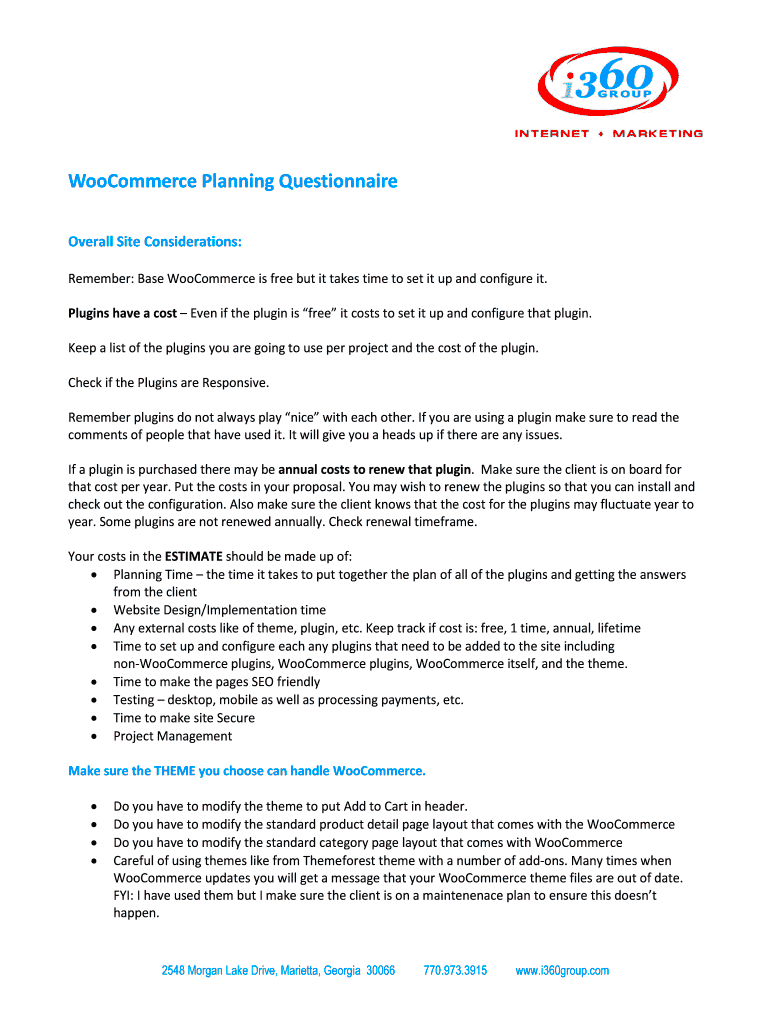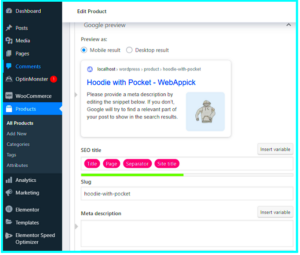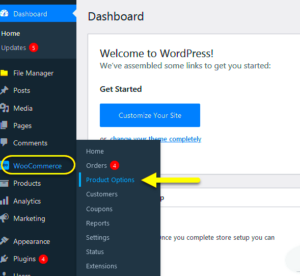If you’re diving into the world of e-commerce, you’re likely familiar with the challenge of guiding potential customers to the right products. That’s where a WooCommerce Questionnaire comes in handy! This interactive tool allows you to engage customers directly, helping them identify their needs and preferences. Whether it’s for clothing, electronics, or services, a well-designed questionnaire can simplify the product selection process. In essence, it acts as a bridge between your offerings and what your customers genuinely want.
Benefits of Using a Questionnaire for Product Selection

Incorporating a questionnaire into your WooCommerce store comes with a myriad of advantages. Here are some key benefits:
- Enhanced Customer Experience: A questionnaire makes the shopping experience more personalized. By asking relevant questions, you demonstrate that you understand your customers’ needs, which can lead to higher satisfaction.
- Improved Product Recommendations: By collecting data on customer preferences, you can better recommend products that fit their specific requirements. This increases the chances of conversion as customers feel more confident in their choices.
- Reduced Return Rates: When customers select products that genuinely fit their needs, they’re less likely to return items. A targeted questionnaire can help avoid mismatches, saving you time and costs associated with returns.
- Valuable Insights: The responses you gather from the questionnaire provide invaluable data about customer preferences and trends. This can inform future product development and marketing strategies.
- Higher Engagement: Interactive elements such as questionnaires can keep users on your site for longer. Higher engagement often translates to increased sales and a loyal customer base.
In summary, utilizing a WooCommerce Questionnaire not only boosts the overall shopping experience but also contributes positively to your business’s bottom line!
How to Create an Effective WooCommerce Questionnaire
Creating a WooCommerce questionnaire that engages your customers and enhances their shopping experience is an art. The goal is to gather valuable insights that can help you refine your product offerings. So, how can you create an effective questionnaire that resonates with your audience? Let’s dive into some practical tips!
1. Define Your Purpose: Start by identifying what you want to achieve with your questionnaire. Is it to understand customer preferences, gauge satisfaction, or help customers find the right products? Defining a clear goal will guide your question selection.
2. Keep It Short and Sweet: Nobody likes answering lengthy surveys. Aim for a few essential questions—between 5 to 10—focusing on key areas like product preferences, purchase motivations, and feedback. The quicker they can respond to it, the more likely they are to finish it!
3. Use Clear and Concise Language: Avoid jargon and complicated terms. Your questions should be straightforward—think about how you’d explain something to a friend. For example, instead of asking, “What attributes do you prioritize in a product?” you might say, “What features are most important to you?”
4. Incorporate Different Question Types: Mixing up question formats can make the questionnaire more engaging. Consider using:
- Multiple Choice: Great for quick responses.
- Rating Scales: Helps gauge customer sentiments.
- Open-Ended Questions: Allow for detailed feedback.
5. Test and Revise: Before launching, test your questionnaire with a small group. Gather feedback on clarity and engagement, and be prepared to make adjustments. A little iterative refinement can go a long way!
Designing Your Questionnaire: Best Practices
Designing an appealing questionnaire is just as important as the questions you ask. An aesthetically pleasing and user-friendly design can make a significant difference in how customers engage with your questionnaire. Here are some best practices to consider:
1. Keep It Visually Appealing: Use a clean layout and consistent branding. Incorporate your brand colors and logos to create a familiar and trustworthy environment. A well-designed questionnaire should feel like an extension of your website, not an afterthought.
2. Prioritize User Experience: Make sure your questionnaire is easy to navigate. Use logical and intuitive flows that guide users smoothly from one question to the next. Consider how users will access it; mobile-friendly designs are essential as many shoppers use their phones.
3. Use Progress Indicators: If your questionnaire is a bit longer, add a progress bar. This gives users a sense of how much they have completed and how much is left. It can motivate them to finish when they see they’re close to the end.
4. Offer Incentives: Sweeten the deal! Consider offering a small incentive for completing your questionnaire, like a discount or entry into a giveaway. This can make users more inclined to participate.
5. Analyze and Act on Feedback: After collecting responses, take the time to analyze the data thoroughly. Use the insights to improve not only your product selection but also the overall shopping experience. Letting users know how their feedback has impacted your offerings can encourage future participation.
By following these best practices, you’ll create a WooCommerce questionnaire that not only gathers valuable insights but also engages your customers, reinforcing a positive brand experience. Happy designing!
Integrating the Questionnaire with Your WooCommerce Store
Alright, so you’ve crafted an amazing questionnaire tailored for your customers, and now it’s time to get it integrated into your WooCommerce store. This step is crucial because once everything’s set up, you can start collecting valuable data that directly influences your product recommendations!
Here’s how to integrate your questionnaire seamlessly:
- Choose a Plugin: The first step is selecting the right plugin for your WooCommerce store. There are many options like WPForms, Quiz Maker, or WooCommerce Product Add-Ons. Pick one that suits your needs.
- Create the Questionnaire: Once you’ve installed the plugin, it’s time to create your questionnaire. Make sure to include various types of questions such as multiple-choice, checkbox, and open-ended questions to get a comprehensive understanding of customer preferences.
- Embedding the Questionnaire: After crafting your questionnaire, the next step is to embed it onto your product pages or your site. Most plugins provide a simple shortcode that you can paste into any page or post.
- Testing the Integration: Before going live, make sure to test your questionnaire. Fill it out yourself to ensure it works smoothly and that all responses are being recorded properly.
- Go Live: Once everything looks good, it’s time to launch! Let your website visitors know about your new questionnaire through your homepage, newsletters, or social media channels.
By following these steps, you can successfully integrate a questionnaire into your WooCommerce store. Get ready to enhance customer engagement and optimize product selections based on their responses!
Analyzing Responses and Making Recommendations
Congratulations! Your questionnaire is live, and you’re starting to gather responses. But now comes one of the most crucial parts: analyzing those responses to make targeted recommendations for your customers.
Here’s how to effectively analyze responses:
- Collect Data: First things first, gather all the responses from your questionnaire. Most plugins will allow you to export this data to a spreadsheet like CSV, which makes it easier to analyze.
- Organize Responses: Once you have your data in a spreadsheet, categorize the responses. You can use filters to identify patterns or preferences. For instance, if you’re selling clothing, you might categorize by size, color preference, and style.
- Identify Trends: Look for common trends among the responses. Are multiple customers interested in similar product features? Or maybe there’s a particular style that resonates more with your audience?
- Segmentation: Based on your findings, segment your customers. You might group them by preferences or demographics. This step is essential for personalized marketing and product recommendations.
- Make Recommendations: Finally, based on the insights gathered, create tailored product recommendations. Present these on your website, send tailored emails, or even use dynamic content to showcase products according to customer preferences.
Remember, the key to your recommendations is personalization. The more tailored they are, the higher the chance your customers will engage with your products. Happy analyzing!
7. Case Studies: Successful Implementation of Questionnaires
In the dynamic world of e-commerce, understanding customer needs is paramount. Questionnaires have emerged as a powerful tool for businesses to enhance product selection. Let’s delve into some case studies that highlight successful implementations of such questionnaires!
Case Study 1: Tech Gadgets Store
A popular tech gadgets store faced challenges in showcasing products to their diverse customer base. They implemented a product selection questionnaire that asked targeted questions about user preferences, such as technology familiarity, budget, and intended use. As a result, they experienced:
- Increased engagement: Customers spent more time on the site, answering questions that helped tailor their shopping experience.
- Higher conversion rates: The personalized product recommendations led to a 25% increase in completed transactions.
Case Study 2: Fitness Equipment Retailer
This retailer wanted to enhance customer satisfaction but struggled with product matching. They designed a questionnaire to gauge fitness levels, goals, and preferred workout regimes. Key outcomes included:
- Improved customer satisfaction: Customers felt more understood and were delighted with the tailored suggestions.
- Reduced returns: The accurate product recommendations resulted in a 30% decrease in product returns due to mismatch.
These case studies illustrate that implementation of questionnaires can significantly enhance the customer experience by providing tailored solutions that resonate with individual preferences.
8. Common Challenges and Solutions
While implementing questionnaires for product selection can be incredibly beneficial, it doesn’t come without challenges. Recognizing these challenges and formulating solutions can make the process smoother and more effective. Let’s break down some common issues and their respective solutions.
| Challenge | Solution |
|---|---|
| Low Response Rates | Incentivize Participation: Offer discounts or rewards for completing the questionnaire to encourage more responses. |
| Overly Complex Questions | Simplify Language: Use straightforward language and clear choices to make it easy for customers to understand and complete. |
| Data Overload | Automated Analysis Tools: Utilize software solutions that can analyze responses and surface actionable insights without manual effort. |
| Maintaining Relevance | Regular Updates: Periodically review and update questions to reflect changing customer preferences and trends. |
By addressing these challenges with thoughtful solutions, businesses can optimize their use of questionnaires, ultimately leading to a better shopping experience for customers. Remember, the goal is to make the buying process as seamless and personalized as possible!
WooCommerce Questionnaire for Product Selection
In the competitive world of e-commerce, providing an exceptional shopping experience is crucial. One effective way to achieve this is through the use of a WooCommerce questionnaire for product selection. This tool serves as an interactive guide, assisting customers in narrowing down their choices from a vast array of products, ultimately enhancing their purchasing decision-making process.
By implementing a well-structured questionnaire, you can:
- Understand Customer Needs: tailor questions to gather insights into customer preferences, enabling more personalized recommendations.
- Simplify Decision-Making: reduce the overwhelm of choices by guiding customers through a series of relevant questions.
- Increase Engagement: interactive questionnaires can boost user involvement, making the shopping experience more enjoyable.
- Improve Conversion Rates: more engaged customers are likely to make a purchase, as they feel more confident in their selections.
- Collect Valuable Data: use the results to analyze trends and enhance your product offerings based on customer feedback.
To create an impactful questionnaire, consider including a variety of question types, such as:
| Question Type | Description |
|---|---|
| Multiple Choice | Allows customers to select one or more options from a list. |
| Rating Scale | Customers rate products or features based on their preferences. |
| Open-Ended | Gives customers the freedom to express their unique thoughts. |
By integrating a questionnaire into your WooCommerce store, you can not only streamline the product selection process but also enhance the overall customer experience, leading to higher satisfaction and loyalty.



